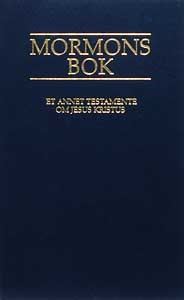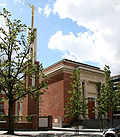
The Church of Jesus Christ of Latter-day Saints, often informally known as the LDS Church or Mormon Church, is a nontrinitarian, Christian restorationist church that considers itself to be the restoration of the original church founded by Jesus Christ. The church is headquartered in Salt Lake City, Utah, in the United States, and has established congregations and built temples worldwide. According to the church, it has over 16 million members and 65,000 full-time volunteer missionaries. In 2012, the National Council of Churches ranked the church as the fourth-largest Christian denomination in the United States, with over 6.5 million members there as of January 2018. It is the largest denomination in the Latter Day Saint movement founded by Joseph Smith during the early 19th century period of religious revival known as the Second Great Awakening.

Mormons are a religious and cultural group related to Mormonism, the principal branch of the Latter Day Saint movement of Restorationist Christianity, initiated by Joseph Smith in upstate New York during the 1820s. After Smith's death in 1844, the Mormons followed Brigham Young to what would become the Utah Territory. Today, most Mormons are understood to be members of The Church of Jesus Christ of Latter-day Saints. Other Mormons may be independently religious, secular and non-practicing, or belong to another denomination. The center of Mormon cultural influence is in Utah, and North America has more Mormons than any other continent, though the majority of Mormons live outside the United States.

The Latter Day Saint movement is the collection of independent church groups that trace their origins to a Christian Restorationist movement founded by Joseph Smith in the late 1820s.
The status of women in Mormonism has been a source of public debate since before the death of Joseph Smith in 1844. Various denominations within the Latter Day Saint movement have taken different paths on the subject of women and their role in the church and in society. Views range from the full equal status and ordination of women to the priesthood, as practiced by the Community of Christ, to a patriarchal system practiced by The Church of Jesus Christ of Latter-day Saints, to the ultra-patriarchal plural marriage system practiced by the Fundamentalist Church of Jesus Christ of Latter-Day Saints and other Mormon fundamentalist groups.

The Encyclopedia of Mormonism is a semiofficial encyclopedia for topics relevant to The Church of Jesus Christ of Latter-day Saints. The text is available free online.

The Mormon colonies in Mexico are settlements located near the Sierra Madre mountains in northern Mexico which were established by members of The Church of Jesus Christ of Latter-day Saints beginning in 1885. The colonists came to Mexico due to federal attempts to curb and prosecute polygamy in the United States. Plural marriage, as polygamous relationships were called by church members, was an important tenet of the church—although it was never practiced by a majority of the membership.
Danquart Anthon Weggeland is considered the "Father of Utah Art" and was an artist and teacher in the early history of Utah Territory.

Since its organization in New York in 1830, The Church of Jesus Christ of Latter-day Saints has had a presence in Canada. The first Latter Day Saint missionaries to preach outside of the United States preached in Upper Canada; the first stake to be established outside of the U.S. was the Alberta Stake; and the Cardston Alberta Temple was the first church temple to be built outside of the current boundaries of the United States.
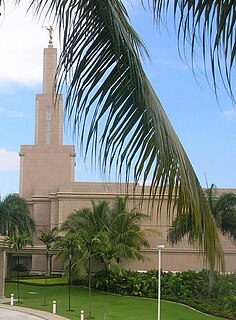
The Church of Jesus Christ of Latter-day Saints has had a presence in the Dominican Republic since 1978. The church claims a membership of 106,243 in the country, representing just over 1% of the population.

Mexico is home to the largest body of members of The Church of Jesus Christ of Latter-day Saints outside of the United States. The Church claimed 1,455,774 members at the end of 2018. In the 2010 census, 314,932 individuals reported belonging to the LDS Church.

As of December 31, 2017, The Church of Jesus Christ of Latter-day Saints reported 151,433 members in 35 stakes, 304 congregations, four missions, and two temples in Colorado.

As of December 31, 2017, The Church of Jesus Christ of Latter-day Saints reported 450,347 members in 129 stakes, 1,126 congregations, four missions, and four temples in Idaho, with a fifth announced. Rexburg, Idaho is home to Brigham Young University–Idaho, previously known as Ricks College.

As of December 31, 2017, The Church of Jesus Christ of Latter-day Saints reported 67,275 members in 17 stakes, 167 congregations, one mission, and one temple.

Mormon art comprises all visual art created to depict the principles and teachings of The Church of Jesus Christ of Latter-day Saints, as well as art deriving from the inspiration of an artist's LDS religious views. Mormon art includes painting, sculpture, quilt work, photography, graphic art, and other mediums, and shares common attributes reflecting Latter-day Saint teachings and values.
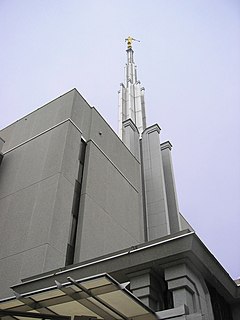
The Church of Jesus Christ of Latter-day Saints was established in Japan in 1901 when the church's first missionaries arrived on August 12. Among them was Heber J. Grant, who was then a member of the Quorum of the Twelve and later became the church's 7th president. Horace S. Ensign, Louis A. Kelsch and Alma O. Taylor accompanied Grant. The LDS Church's first baptism in Japan was on March 8, 1902, when Grant baptized Hajime Nakazawa, a former Kannushi. The Book of Mormon was translated three times. The first translation, which took over six years, was completed by Taylor in 1909. It was then recommended that the Book of Mormon be translated into bunshō, a more elegant literary style, which was done by Chōkō Ikuta in 1909, shortly before it was published and distributed. The second translation in 1957 was done by Tatsui Sato. In 1995, the Book of Mormon was translated again into a more colloquial style.
Three Church of Jesus Christ of Latter-day Saints missionaries started proselyting to white English-speaking people in Cape Town in 1853. Most converts from this time emigrated to the United States. The mission was closed in 1865, but reopened in 1903.The South African government limited the amount of missionaries allowed to enter the country in 1921 and in 1955. Starting around 1930, a man had to trace his genealogy out of Africa to be eligible for the priesthood, since black people were not permitted to be ordained. In 1954 when David O. McKay visited South Africa, he removed the requirement for genealogical research for a priest to be ordained, stipulating only that "there is no evidence of his having Negro blood in his veins".

As of 1 January 2011, The Church of Jesus Christ of Latter-day Saints reported 9,343 members in three stakes, 24 congregations, no missions, and no temples in Wales.
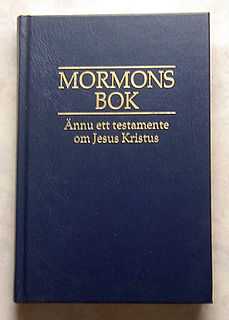
The Church of Jesus Christ of Latter-day Saints, headquartered in Salt Lake City, Utah, has been in Sweden since 1850.
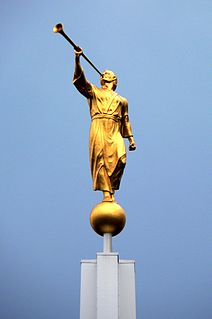
The following outline is provided as an overview of and a topical guide to The Church of Jesus Christ of Latter-day Saints.
